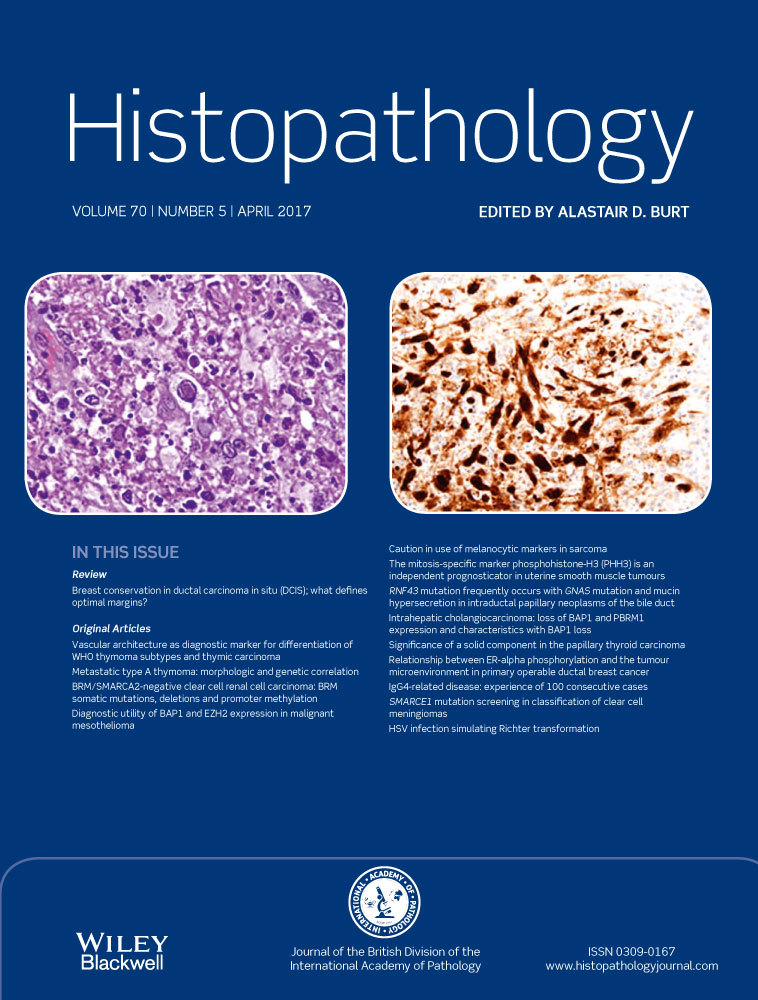The relationship between oestrogen receptor-alpha phosphorylation and the tumour microenvironment in patients with primary operable ductal breast cancer
Abstract
Aims
Although the role of phosphorylation of oestrogen receptor (ER) at serines 118 (p-S118) and 167 (p-S167) has been studied, the relationship between p-S118, p-S167 and the tumour microenvironment in ER-positive primary operable ductal breast cancers have not been investigated. The aims of this study are to investigate (i) the relationship between p-S118/p-S167 and the tumour microenvironment, and (ii) the effect of p-S118/167 on survival and recurrence in ER-positive primary operable ductal breast cancers.
Methods and results
Patients presenting at three Glasgow hospitals between 1995 and 1998 with invasive ductal ER-positive primary breast cancers were studied (n = 294). Immunohistochemical staining of p-S118 and p-S167 was performed and their association with clinicopathological characteristics, cancer-specific survival (CSS) and recurrence-free interval (RFI) were examined. In the whole cohort, tumour size (P < 0.05) and microvessel density (P < 0.05) were associated with high p-S118 while increased micovessel density (P < 0.05), apoptosis (P < 0.05), general inflammatory infiltrate measured using the Klintrup–Makinen score (P < 0.05) and macrophage infiltrate (P < 0.05) were found to be associated with high p-S167. Only high p-S167 was associated with shorter CSS (P < 0.005) and shorter RFI in the whole cohort (P = 0.001) and separately in the luminal A (P < 0.05) and B tumours (P < 0.05).
Conclusions
This study showed that both p-S118 and p-S167 were associated with several microenvironmental factors, including increased microvessel density. In particular, p-S167 was associated with reduced RFI and CSS in the whole cohort and RFI in luminal A and B tumours and could possibly be employed to predict response to kinase inhibitors.




